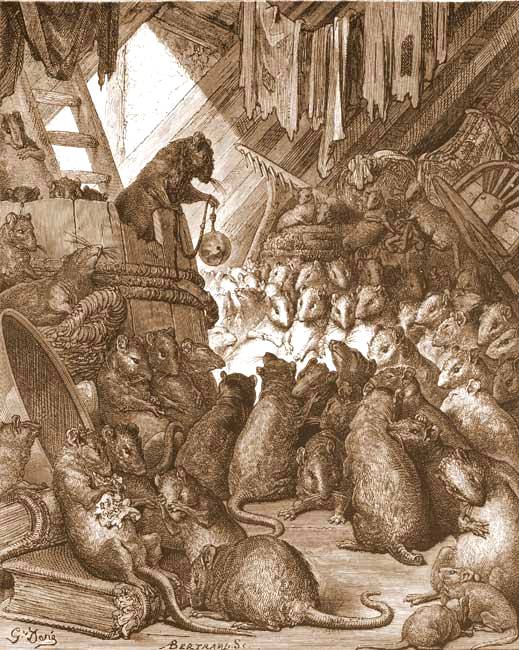|
Law (principle)
A law is a universal principle that describes the fundamental nature of something, the universal properties and the relationships between things, or a description that purports to explain these principles and relationships. Laws of nature For example, physical laws such as the law of gravity or scientific laws attempt to describe the fundamental nature of the universe itself. Laws of mathematics and logic describe the nature of rational thought and inference ( Kant's transcendental idealism, and differently G. Spencer-Brown's work ''Laws of Form'', was precisely a determination of the ''a priori'' laws governing human thought before any interaction whatsoever with experience). Within most fields of study, and in science in particular, the elevation of some principle of that field to the status of law usually takes place after a very long time during which the principle is used and tested and verified; though in some fields of study such laws are simply postulated as a fo ... [...More Info...] [...Related Items...] OR: [Wikipedia] [Google] [Baidu] |
Gravity
In physics, gravity (), also known as gravitation or a gravitational interaction, is a fundamental interaction, a mutual attraction between all massive particles. On Earth, gravity takes a slightly different meaning: the observed force between objects and the Earth. This force is dominated by the combined gravitational interactions of particles but also includes effect of the Earth's rotation. Gravity gives weight to physical objects and is essential to understanding the mechanisms responsible for surface water waves and lunar tides. Gravity also has many important biological functions, helping to guide the growth of plants through the process of gravitropism and influencing the circulation of fluids in multicellular organisms. The gravitational attraction between primordial hydrogen and clumps of dark matter in the early universe caused the hydrogen gas to coalesce, eventually condensing and fusing to form stars. At larger scales this results in galaxies and clust ... [...More Info...] [...Related Items...] OR: [Wikipedia] [Google] [Baidu] |
Boyle's Law
Boyle's law, also referred to as the Boyle–Mariotte law or Mariotte's law (especially in France), is an empirical gas laws, gas law that describes the relationship between pressure and volume of a confined gas. Boyle's law has been stated as: The absolute pressure exerted by a given mass of an ideal gas is inversely proportional to the volume it occupies if the temperature and amount of substance, amount of gas remain unchanged within a closed system.Levine (1978) p. 12 gives the original definition. Mathematically, Boyle's law can be stated as: or where is the pressure of the gas, is the volume of the gas, and is a Constant (mathematics), constant for a particular temperature and amount of gas. Boyle's law states that when the temperature of a given mass of confined gas is constant, the product of its pressure and volume is also constant. When comparing the same substance under two different sets of conditions, the law can be expressed as: P_1 V_1 = P_2 V_2. showi ... [...More Info...] [...Related Items...] OR: [Wikipedia] [Google] [Baidu] |
Murphy's Law
Murphy's law is an adage or epigram that is typically stated as: "Anything that can go wrong will go wrong." Though similar statements and concepts have been made over the course of history, the law itself was coined by, and named after, American aerospace engineer Edward A. Murphy Jr.; its exact origins are debated, but it is generally agreed it originated from Murphy and his team following a mishap during rocket sled tests some time between 1948 and 1949, and was finalized and first popularized by testing project head John Stapp during a later press conference. Murphy's original quote was the precautionary design advice that "If there are two or more ways to do something and one of those results in a catastrophe, then someone will do it that way." The law entered wider public knowledge in the late 1970s with the publication of Arthur Bloch's 1977 book ''Murphy's Law, and Other Reasons Why Things Go WRONG'', which included other variations and Corollary, corollaries of the law. ... [...More Info...] [...Related Items...] OR: [Wikipedia] [Google] [Baidu] |
Adage
A proverb (from ) or an adage is a simple, traditional saying that expresses a perceived truth based on common sense or experience. Proverbs are often metaphorical and are an example of formulaic speech, formulaic language. A proverbial phrase or a proverbial expression is a type of a conventional saying similar to proverbs and transmitted by oral tradition. The difference is that a proverb is a fixed expression, while a proverbial phrase permits alterations to fit the grammar of the context. Collectively, they form a folklore genre, genre of folklore. Some proverbs exist in more than one language because people borrow them from languages and cultures with which they are in contact. In the West, the Bible (including, but not limited to the Book of Proverbs) and medieval Latin (aided by the work of Erasmus) have played a considerable role in distributing proverbs. Not all Biblical proverbs, however, were distributed to the same extent: one scholar has gathered evidence to show th ... [...More Info...] [...Related Items...] OR: [Wikipedia] [Google] [Baidu] |
Unintended Consequences
In the social sciences, unintended consequences (sometimes unanticipated consequences or unforeseen consequences, more colloquially called knock-on effects) are outcomes of a purposeful action that are not intended or foreseen. The term was popularized in the 20th century by American sociologist Robert K. Merton. and later used to prevent erosion in earthworks, has become a major problem in the Southeastern United States. Kudzu has displaced native plants and has effectively taken over significant portions of land. The protection of the steel industry in the United States reduced production of steel in the United States, increased costs to users, and increased unemployment in associated industries. Perverse results In 2003, Barbra Streisand unsuccessfully sued Kenneth Adelman and Pictopia.com for posting a photograph of her home online. Before the lawsuit had been filed, only 6 people had downloaded the file, two of them Streisand's attorneys. The lawsuit drew attention to t ... [...More Info...] [...Related Items...] OR: [Wikipedia] [Google] [Baidu] |
Moore's Law
Moore's law is the observation that the Transistor count, number of transistors in an integrated circuit (IC) doubles about every two years. Moore's law is an observation and Forecasting, projection of a historical trend. Rather than a law of physics, it is an empirical relationship. It is an experience-curve law, a type of law quantifying efficiency gains from experience in production. The observation is named after Gordon Moore, the co-founder of Fairchild Semiconductor and Intel and former CEO of the latter, who in 1965 noted that the number of components per integrated circuit had been exponential growth, doubling every year, and projected this rate of growth would continue for at least another decade. In 1975, looking forward to the next decade, he revised the forecast to doubling every two years, a compound annual growth rate (CAGR) of 41%. Moore's empirical evidence did not directly imply that the historical trend would continue, nevertheless, his prediction has held si ... [...More Info...] [...Related Items...] OR: [Wikipedia] [Google] [Baidu] |
Malthusian Growth Model
A Malthusian growth model, sometimes called a simple exponential growth model, is essentially exponential growth based on the idea of the function being proportional to the speed to which the function grows. The model is named after Thomas Robert Malthus, who wrote ''An Essay on the Principle of Population'' (1798), one of the earliest and most influential books on population."Malthus, An Essay on the Principle of Population: Library of Economics" Malthusian models have the following form: : P(t) = P_0e^ where * ''P''0 = ''P''(0) is the initial population size, * ''r'' = the population growth rate, which Ronald Fisher called the Malthusian parameter of population growth in '' The Genetical Theory of Natural Selection'', and Alfred J. Lotka called the ''intrinsic rate of increase'', * ''t'' = time. The model can also be written in the form of a differential equation: : \frac = rP with initial condition: ''P''(0)= ''P''0 This model is often referred to as the exponential law ... [...More Info...] [...Related Items...] OR: [Wikipedia] [Google] [Baidu] |
Thomas Malthus
Thomas Robert Malthus (; 13/14 February 1766 – 29 December 1834) was an English economist, cleric, and scholar influential in the fields of political economy and demography. In his 1798 book ''An Essay on the Principle of Population'', Malthus observed that an increase in a nation's food production improved the well-being of the population, but the improvement was temporary because it led to population growth, which in turn restored the original per capita production level. In other words, humans had a propensity to use abundance for population growth rather than for maintaining a high standard of living, a view and stance that has become known as the " Malthusian trap" or the "Malthusian spectre". Populations had a tendency to grow until the lower class suffered hardship, want, and greater susceptibility to war, famine, and disease, a pessimistic view that is sometimes referred to as a Malthusian catastrophe. Malthus wrote in opposition to the popular view in 18th-century ... [...More Info...] [...Related Items...] OR: [Wikipedia] [Google] [Baidu] |
Zipf's Law
Zipf's law (; ) is an empirical law stating that when a list of measured values is sorted in decreasing order, the value of the -th entry is often approximately inversely proportional to . The best known instance of Zipf's law applies to the frequency table of words in a text or corpus of natural language: \ \mathsf\ \propto\ \frac ~. It is usually found that the most common word occurs approximately twice as often as the next common one, three times as often as the third most common, and so on. For example, in the Brown Corpus of American English text, the word "''the''" is the most frequently occurring word, and by itself accounts for nearly 7% of all word occurrences (69,971 out of slightly over 1 million). True to Zipf's law, the second-place word "''of''" accounts for slightly over 3.5% of words (36,411 occurrences), followed by "''and''" (28,852). It is often used in the following form, called Zipf-Mandelbrot law: \ \mathsf\ \propto\ \frac\ where \ a\ a ... [...More Info...] [...Related Items...] OR: [Wikipedia] [Google] [Baidu] |
Say's Law
In classical economics, Say's law, or the law of markets, is the claim that the production of a product creates demand for another product by providing something of value which can be exchanged for that other product. So, production is the source of demand. It is named after Jean-Baptiste Say. In his principal work, ''A Treatise on Political Economy'' "A product is no sooner created, than it, from that instant, affords a market for other products to the full extent of its own value." And also, "As each of us can only purchase the productions of others with his/her own productions – as the value we can buy is equal to the value we can produce, the more men can produce, the more they will purchase." Some maintain that Say further argued that this law of markets implies that a general glut (a widespread excess of supply over demand) cannot occur. If there is a surplus of one good, there must be unmet demand for another: "If certain goods remain unsold, it is because other goods a ... [...More Info...] [...Related Items...] OR: [Wikipedia] [Google] [Baidu] |
Philosophy
Philosophy ('love of wisdom' in Ancient Greek) is a systematic study of general and fundamental questions concerning topics like existence, reason, knowledge, Value (ethics and social sciences), value, mind, and language. It is a rational and critical inquiry that reflects on its methods and assumptions. Historically, many of the individual sciences, such as physics and psychology, formed part of philosophy. However, they are considered separate academic disciplines in the modern sense of the term. Influential traditions in the history of philosophy include Western philosophy, Western, Islamic philosophy, Arabic–Persian, Indian philosophy, Indian, and Chinese philosophy. Western philosophy originated in Ancient Greece and covers a wide area of philosophical subfields. A central topic in Arabic–Persian philosophy is the relation between reason and revelation. Indian philosophy combines the Spirituality, spiritual problem of how to reach Enlightenment in Buddhism, enlighten ... [...More Info...] [...Related Items...] OR: [Wikipedia] [Google] [Baidu] |








